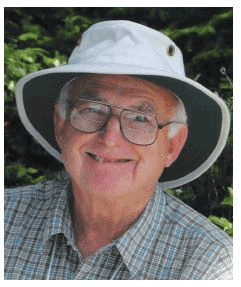Dr Nigel Hubert Clark, 1927–2014

I still remember the first time I spoke with Dr Clark, 35 years ago. It was over the phone and I had never in my life heard such an intelligent, relaxed, and effortlessly comprehensive stream of human communication. He was so cool. I recall wondering whether I could ever be like that (I couldn’t).
As a family physician at St. Vincent’s Hospital, Dr Clark was universally liked and respected among colleagues. He was active in hospital politics and teaching, and practised entirely in the full-service style to which we are now struggling to return: office, care in the hospital, surgical assists, obstetrics, nursing home, and on-call. He spent many years as a chair of the Workers’ Compensation Board Medical Review Panels. When I did a locum for him in my first year of practice, I found an office that was beautifully equipped, efficient, and welcoming.
A graduate of the first medical school class at UBC, Dr Clark was—as well as a fine physician—an accomplished yachtsman, student of the arts, humanist, practical joker, and stealthy hunter dreaded among the widgeons and mallards of Richmond and Delta. Dr Clark retired in his 70s and traveled the world with his wife, Liz, enjoying summers at Roberts Creek and contributing wonderfully to the lives of his grandchildren. We were fortunate to be able to house him and Liz in their beloved waterfront cabin at “camp” during the several years of their frailty. Dr Clark died at home on 5 November 2014.
I am late into my own career, and only now do I fully understand how much of the art of medicine and life I learned from my uniquely accomplished father-in-law, Dr Nigel Clark.
—John Sloan, MD
Vancouver
